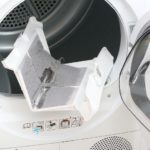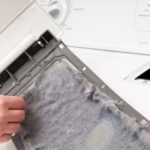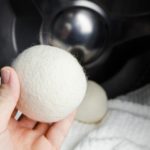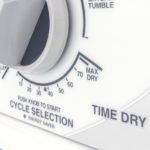If you’ve ever used a tumble dryer, you’ll know all too well that lint build-up can be a problem.
Failing to empty the lint trap can lead to higher energy bills or even the potential of a fire.
But have you ever wondered what causes dryer lint? If so, you’re in the right place!
What Causes Dryer Lint?
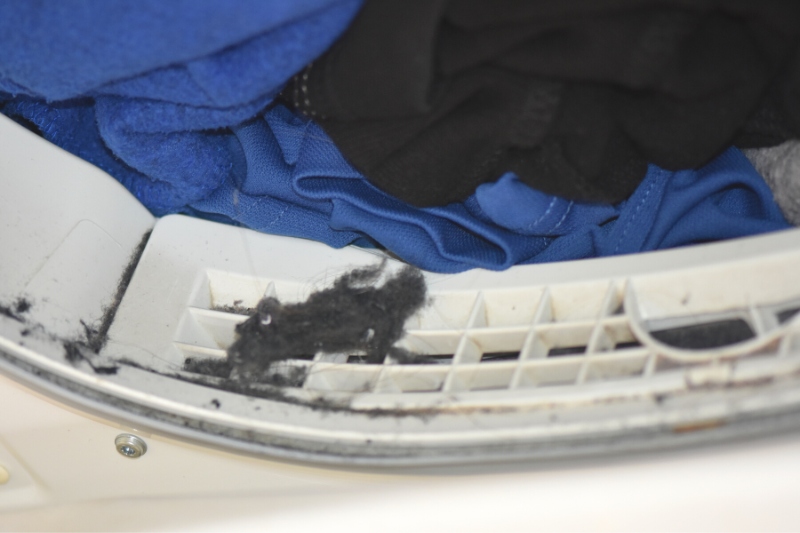
Dryer lint is made from tiny fibres that your clothes shed as they dry. This is a result of friction from the clothes and fibres rubbing against each other.
Threads in clothing are made from tiny fibres twisted together, and these can become loose or detached from the weave through normal wear.
The heat and tumbling action cause clothing fibres (mostly cotton and wool) to break off the edges before getting caught in the lint trap.
Your washing machine produces lint, too, but you won’t see it because it gets washed down the drain.
Unfortunately, there’s nothing you can do to stop lint from forming completely, although you can add a lint trap to your washing machine. This at least stops it from being washed away.
How Do I Stop My Tumble Dryer from Getting Lint?
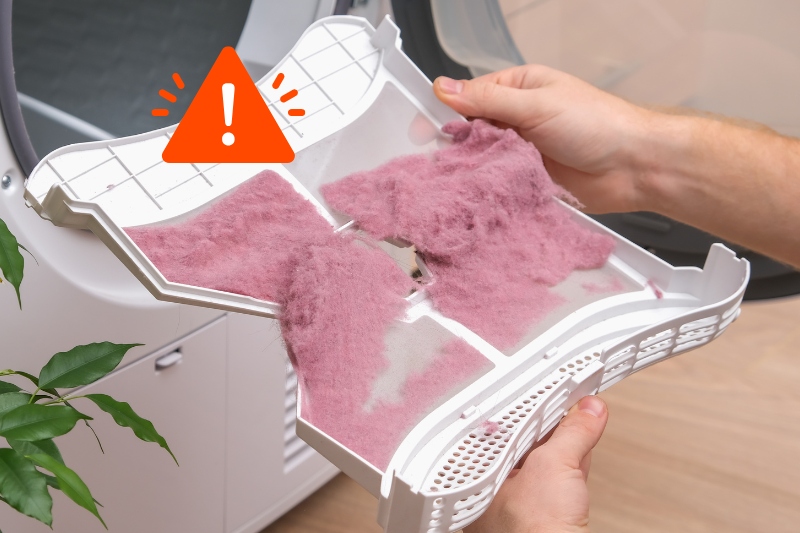
You can’t stop your tumble dryer from getting lint, as it’s a natural result of the drying process.
The only way you’d be able to prevent lint from forming in your dryer would be to not use it at all.
Air-drying clothes doesn’t produce excess lint, although this obviously isn’t always practical.
The next best thing is to regularly clean your tumble dryer to control lint levels. You should empty the lint trap after every use.
Every five uses or so you should also vacuum the spaces around the trap to catch any loose lint.
While this won’t stop the problem, it at least prevents your clothes from getting covered.
What Clothes Produce the Most Lint?
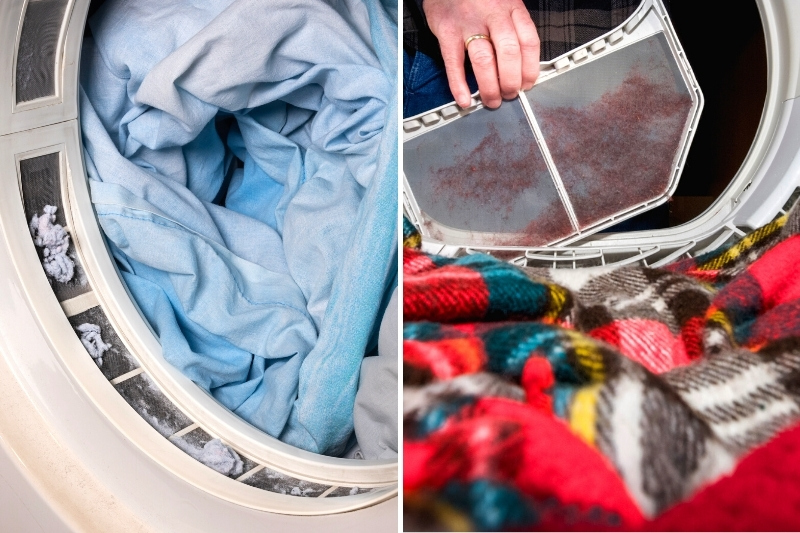
Natural fibres produce the most lint because of the way they’re woven.
For example, cotton thread consists of tiny fibres woven into long strands, and these can easily break off or come out of the weave.
Synthetic fibres, on the other hand, are more often made from longer or single fibres, meaning it’s harder for them to break apart.
However, synthetic clothes attract more lint than natural ones because they can build up static electricity through friction.
Do Dryer Balls Remove Lint?
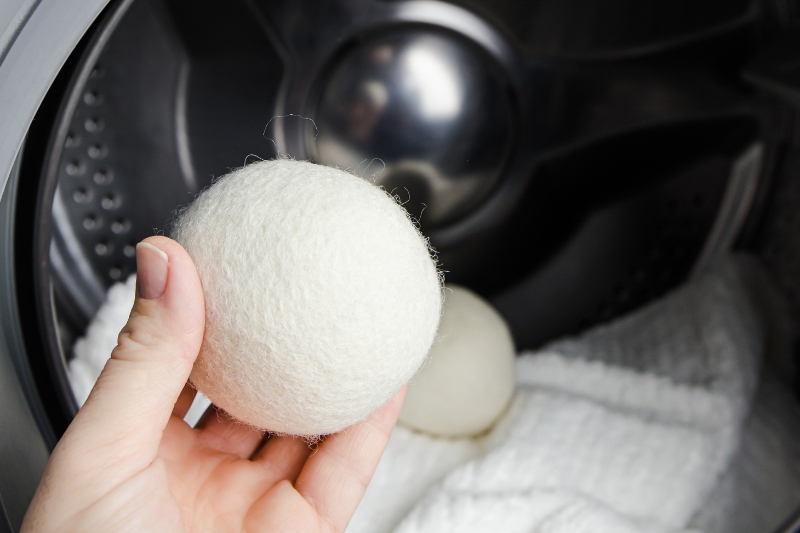
Dryer balls are designed to better aerate drying washing, which helps it to dry faster.
However, wool dryer balls can also reduce static, although this isn’t the case for silicone balls. But, do dryer balls remove lint?
Dryer balls aren’t designed to remove lint, although lint will get stuck to wool balls.
You’ll want to remove it every so often otherwise the dryer balls won’t be able to serve their proper purpose. Simply pick it off and then treat your dryer balls as normal.
Final Thoughts
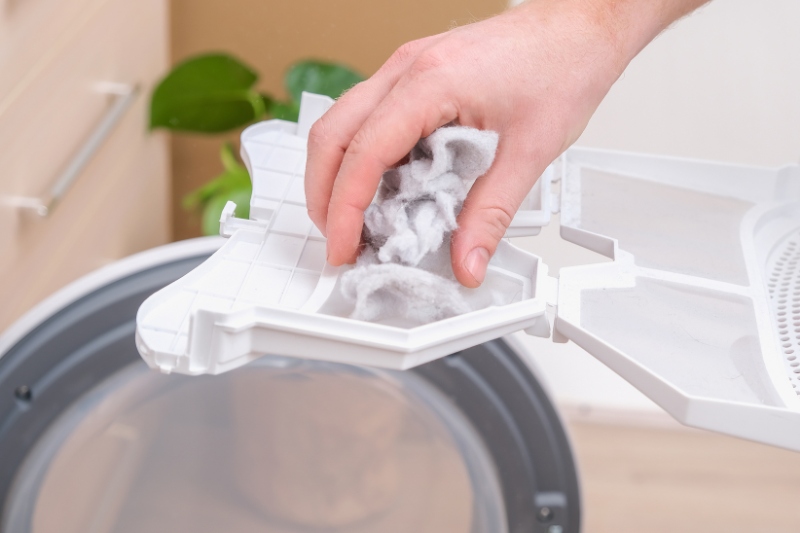
Dryer lint is a constant problem that, while it can’t be solved, can at least be managed.
By knowing what causes dryer lint, you can help cut down on the amount your dryer produces. Failing that, just make sure you empty the lint trap regularly so it doesn’t catch fire!

Jacob is a writer based in Wales, where he lives with his partner and two dogs. All his work is fuelled by extensive research and buckets of coffee.

